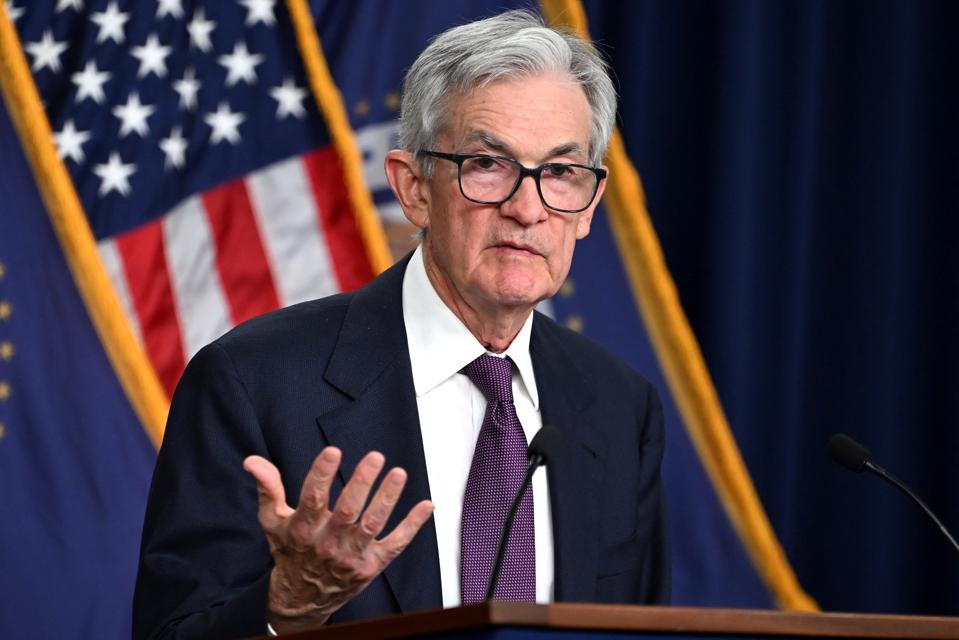Interest rates have been held steady as the Federal Open Market Committee have held three of its eight scheduled meetings of 2025. Markets expect that the FOMC will cut rates from their current level of 4.25% to 4.5% by December, probably to under 4%.
However, any potential cuts are now expected for interest rates depending on how the economy performs.
Expectations For Interest Rate Cuts
Prior expectations were for the first interest rate cut of 2025 to perhaps come in June, but based on recent comments from policymakers, a July or September cut is now more likely.
The challenge is that policymakers are waiting for economic data to reveal how tariffs and other policies are impacting the U.S. economy. On the one hand, tariffs may trigger inflation, requiring perhaps higher rates or limiting potential cuts. However, on the other hand, the risk of slowing growth could create impetus for lower interest rates to spur the economy.
That said, for now, despite elevated uncertainty and soft survey data, jobs data up to the month of April has remained robust and inflation subdued according to reports up to the month of March.
The FOMC’s Meeting Schedule
The FOMC is scheduled to announce interest rate decisions on June 18, July 30, September 17, October 29 and December 10. Of these, the June, September and December meetings may prove more informative because FOMC officials will update their Summary of Economic Projections. That will include forecasts for interest rates and various economic variables.
In addition, the FOMC can update interest rates whenever they wish in the event of more extreme economic events, though is this not common.
Recent Statements From Fed Policymakers
FOMC officials have recently emphasized the high degree of uncertainty and potential downside risks for the U.S. economy. Governor Michael Barr said, “The outlook has been clouded by trade policies that have led to an increase in uncertainty, contributing to declines in measures of consumer and business sentiment. I expect tariffs to lead to higher inflation in the United States and lower growth both in the United States and abroad starting later this year.” At a speech in Iceland on May 9. He also noted that, “The FOMC may be in a difficult position if we were to see both rising inflation and rising unemployment.”
Fed Chair Jerome Powell made a similar statement regarding uncertainty during the press conference after the FOMC’s May decision saying, “I think there’s a great deal of uncertainty about, for example, where tariff policies are going to settle out, and also when they do settle out, what will be the implications for the economy for growth and for employment? And I think it’s too early to know that. So I mean, ultimately we think our policy rate is in a good place to stay as we await further clarity on tariffs and ultimately our implications for the economy.”
What Markets Expect For Interest Rates
The chance of the FOMC cutting interest rates in June has fallen according to fixed income markets. However, there is a 50/50 chance of a July cut and at least one cut becomes very probable by September. Overall, markets anticipate a likely range of between one and four interest rate cuts in 2025.
Two or three cuts are the most likely outcome by year-end, potentially leaving short-term rates in a 3.5% to 4% range. These forecasts are from the CME’s FedWatch Tool, which interprets the implicit forecasts of fixed income markets for FOMC decisions.
Overall, despite considerable economic uncertainty, the projection of markets is that rates will still come down in 2025. That’s a similar assessment to earlier this year.
FOMC officials are less ready to discuss near-term interest rate cuts in the face of economic uncertainty and are awaiting incoming data rather than predicting it. However, at the next FOMC meeting on June 18 even though rates aren’t necessarily expected to move, policymakers will provide specific, updated expectations for interest rates in 2025. In addition, by then, further economic data will have been reported on how tariffs are impacting the economy.

